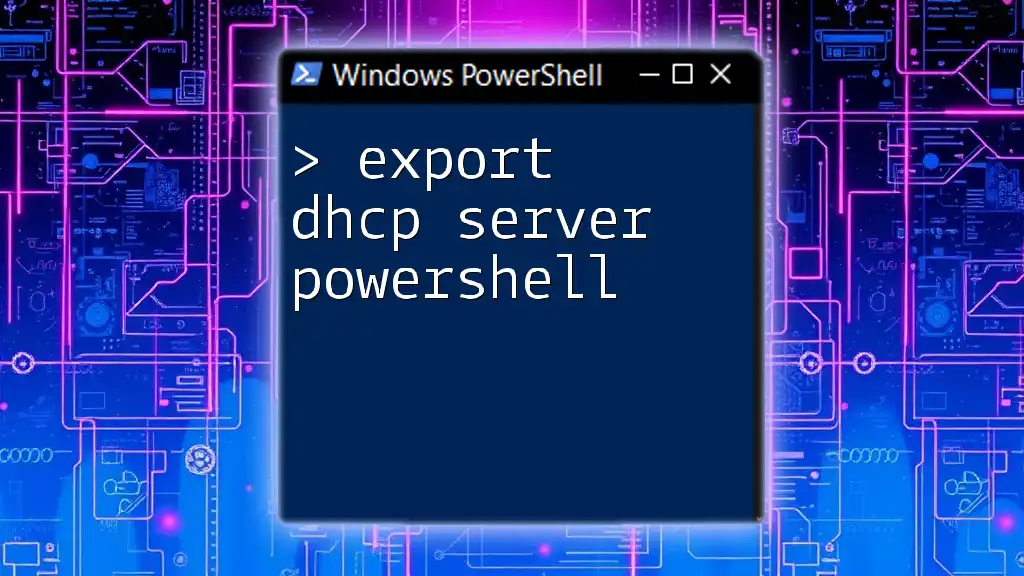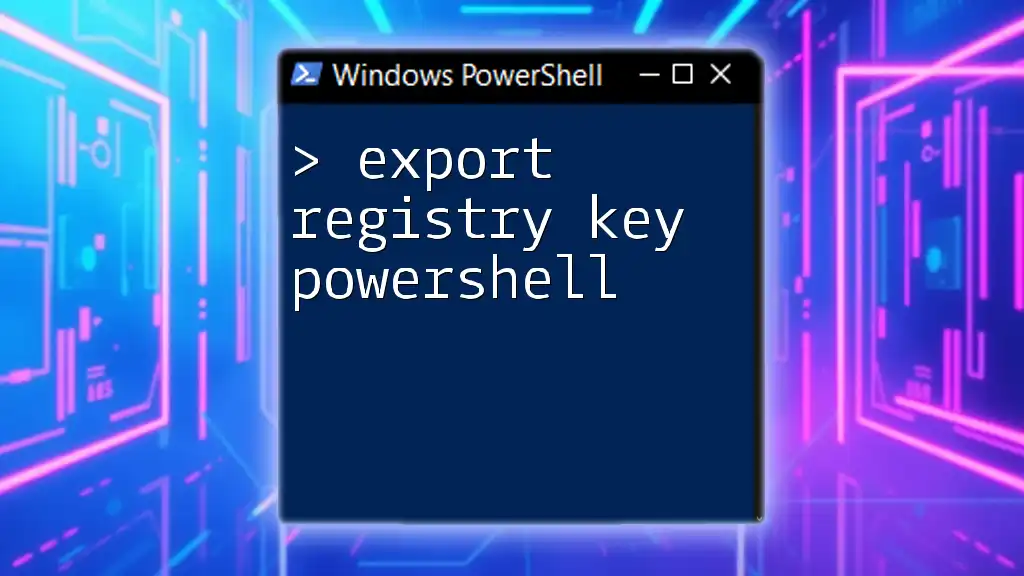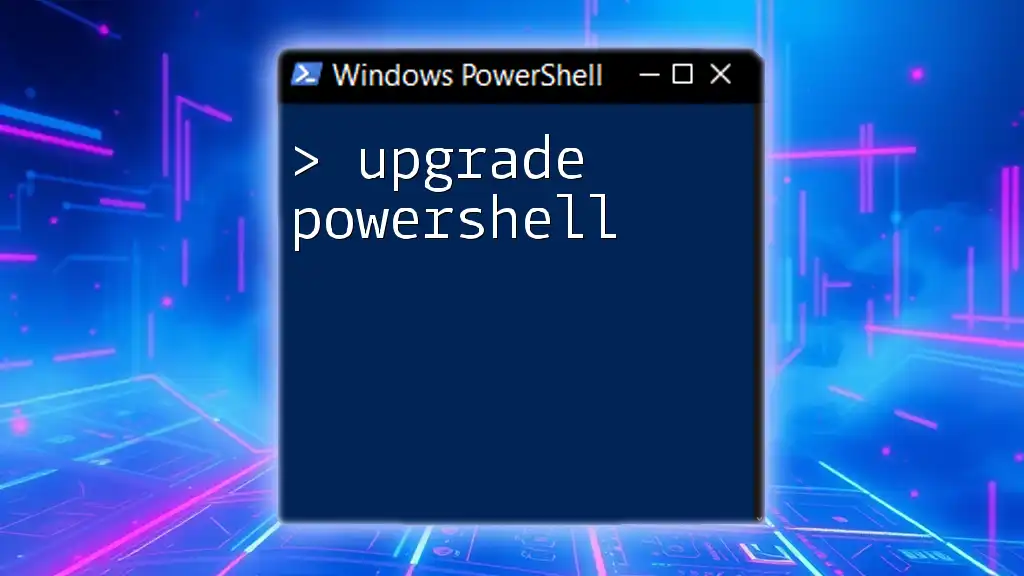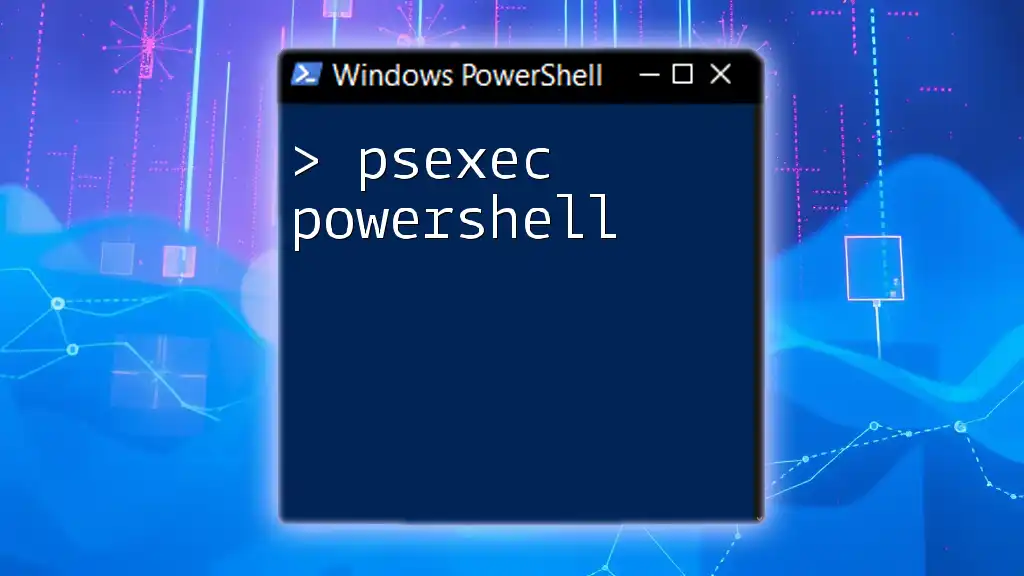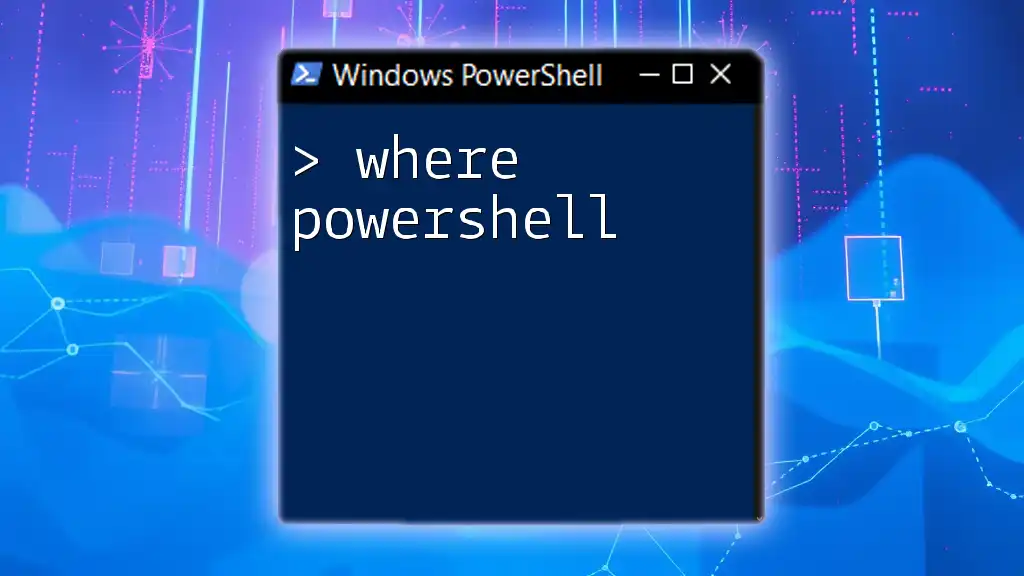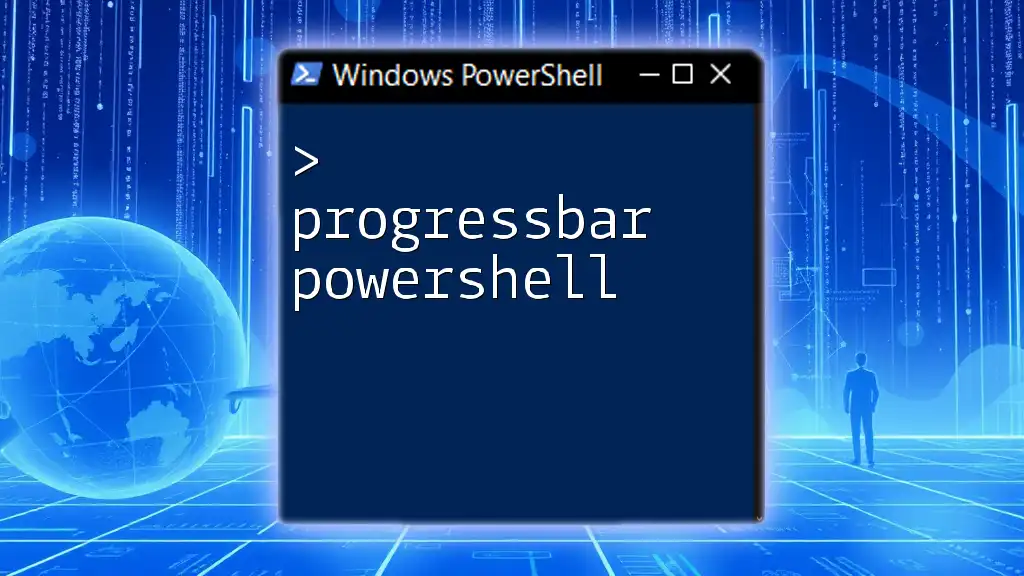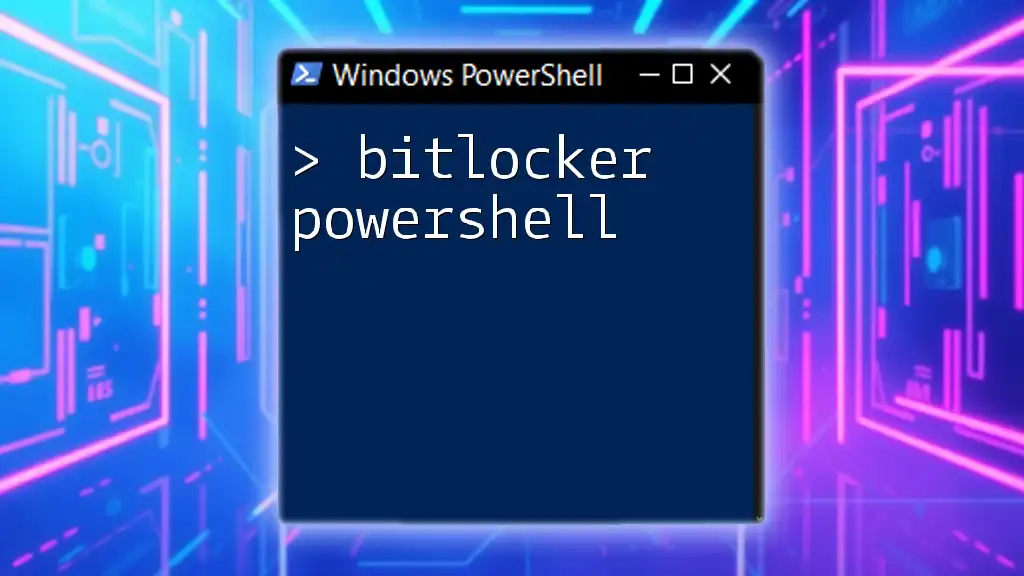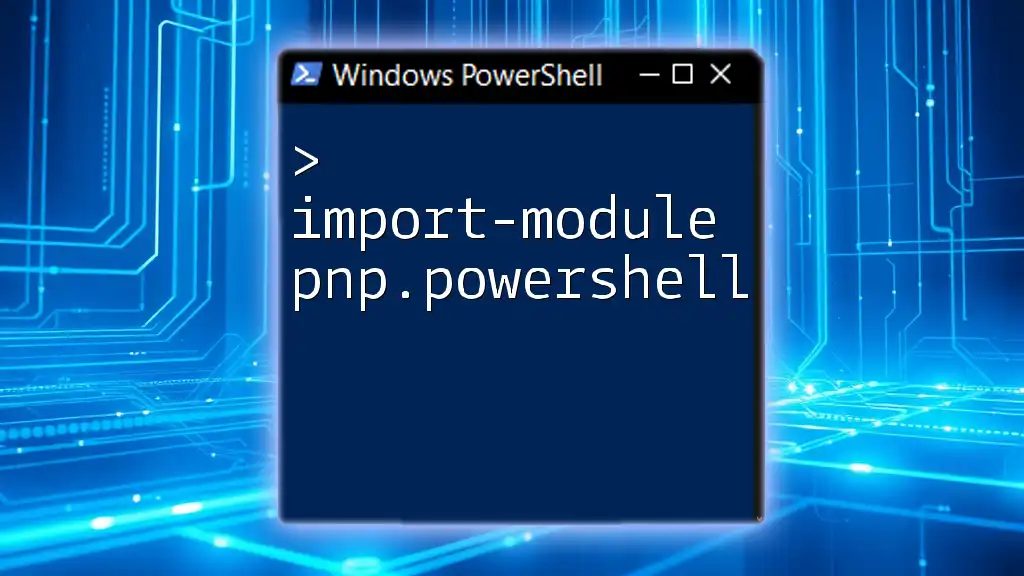To export DHCP server configuration data using PowerShell, you can execute the following command to save the settings to a specified file.
Export-DhcpServer -ComputerName "DHCPServerName" -File "C:\Path\To\Export\dhcpconfig.xml" -Leases -ScopeId "ScopeID"
Understanding DHCP Server Configuration
What is a DHCP Server?
A DHCP Server, or Dynamic Host Configuration Protocol Server, is a network service that automatically assigns IP addresses and other configurations to devices on a network. Within a TCP/IP network, a DHCP server eliminates the need for manual IP address configuration, reducing the potential for address conflicts and human errors. Essentially, it streamlines network management by ensuring that devices acquire the correct settings for seamless operation.
Why Export DHCP Server Data?
Exporting DHCP data is vital for several reasons:
- Backup: Regular exports serve as backups, allowing administrators to restore settings in the event of server failure or data corruption.
- Migration: When transitioning to a new DHCP server or upgrading systems, exporting current configurations ensures that valid settings can be easily transferred.
- Auditing: Exported data can assist in compliance auditing by maintaining records of configurations and allocations.

Setting Up Your Environment to Use PowerShell
Pre-requisites
Before you embark on exporting DHCP server data using PowerShell, ensure you have:
- The DHCP Server PowerShell module installed.
- Administrative privileges on the system where you are executing these commands.
Installing DHCP Server Tools
To manage DHCP settings via PowerShell, you must install the DHCP tools, which include the PowerShell module. You can easily do this through PowerShell itself. Use the following command:
Install-WindowsFeature -Name DHCP -IncludeManagementTools
Running this command installs the necessary tools, allowing you to leverage PowerShell for managing your DHCP server effectively.
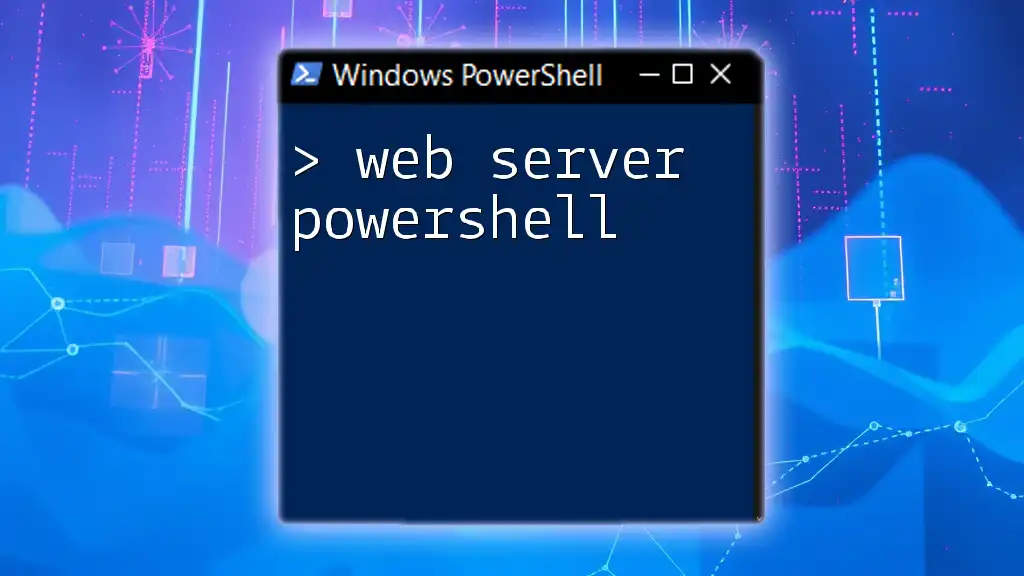
Exporting DHCP Server Data Using PowerShell
Overview of the Export Command
The Export-DhcpServer cmdlet is your primary tool for exporting DHCP server configurations. By default, it exports settings to an XML file which captures all the relevant data, making it easy to back up or migrate.
Syntax and Parameters
Basic Syntax
The basic syntax for the Export-DhcpServer cmdlet is as follows:
Export-DhcpServer -ComputerName <ServerName> -File <FilePath>
Key Parameters Explained
- ComputerName: Specifies the target DHCP server from which you want to export settings.
- File: Indicates the path where the exported file should be saved.
- Force: With this switch, you can overwrite an existing file without being prompted.
Example Commands
Let’s begin with a basic export command example:
Export-DhcpServer -ComputerName "DHCP-Server1" -File "C:\Backup\dhcp-backup.xml"
This command connects to the DHCP server named DHCP-Server1 and saves its configuration to the specified XML file at C:\Backup\dhcp-backup.xml. This is a straightforward example showing how to perform the export.
For scenarios where you want to avoid prompts about overwriting an existing backup file, you might use the following command:
Export-DhcpServer -ComputerName "DHCP-Server1" -File "C:\Backup\dhcp-backup.xml" -Force
In this case, the `-Force` parameter allows you to overwrite any existing file at the specified path without confirmation, which can be particularly useful for scheduling backups.
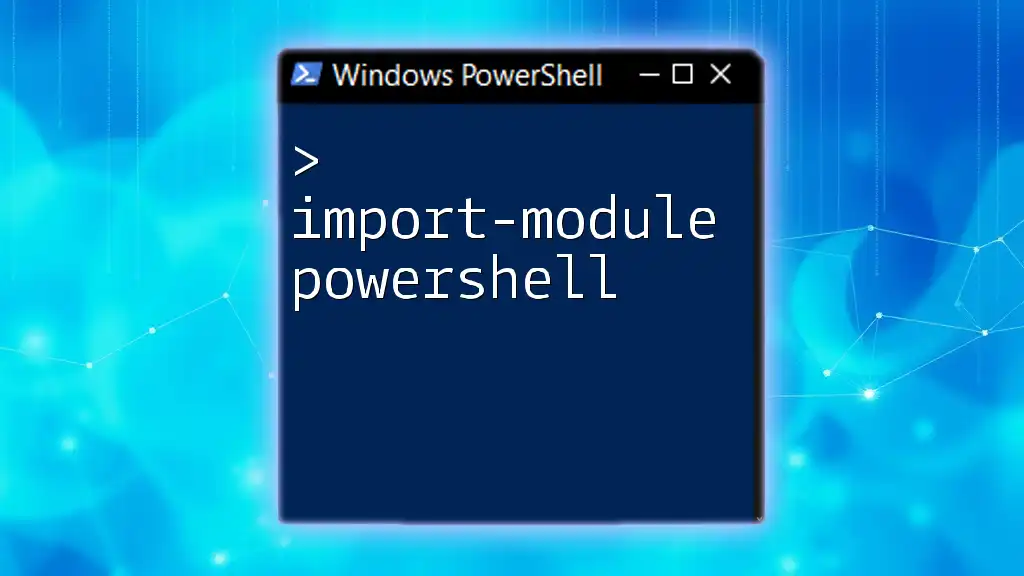
Handling Exported Files
Understanding the Export Format
The exported file is formatted in XML, a widely used markup language that encodes the DHCP configuration in a structured manner. Familiarizing yourself with this format can help you manually inspect the configuration if needed, or even modify it before re-importing it into another DHCP server.
Importing the Exported DHCP Data
Re-importing your exported data is just as easy using the Import-DhcpServer cmdlet. This command will bring your configurations into another DHCP server seamlessly.
Syntax for Importing
The basic syntax for importing exported configurations is:
Import-DhcpServer -ComputerName <ServerName> -File <FilePath>
Example Import Command
When you need to restore settings to another server, simply execute the import command as follows:
Import-DhcpServer -ComputerName "DHCP-Server2" -File "C:\Backup\dhcp-backup.xml"
This command takes the configurations saved in dhcp-backup.xml and imports them into the target server DHCP-Server2. It’s essential to ensure the paths and server names are correct to avoid any disruptions.
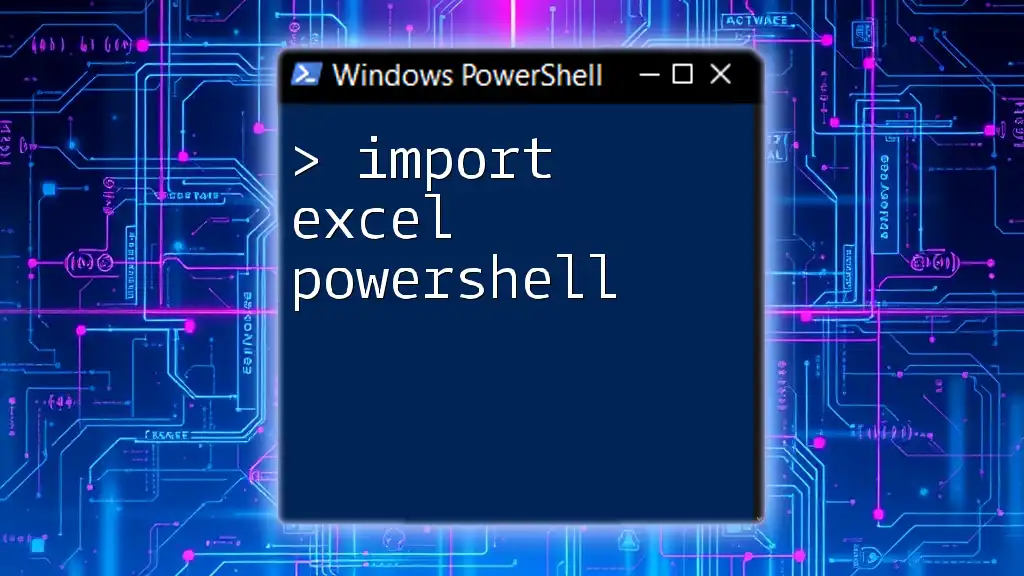
Common Issues and Troubleshooting
Permission Errors
Permission-related issues can be common when executing export or import commands. Ensure you are running PowerShell as an administrator to bypass these restrictions. If you encounter warnings that permissions are denied, verify your user account has the necessary rights to access the DHCP server.
Module Not Found
If you attempt to use the cmdlets and receive errors concerning missing modules, confirm that the DHCP Server feature is installed correctly on the machine and that you are using a version of Windows that supports the PowerShell module.
Invalid Path Error
When specifying the file path for export or import, ensure that the directory actually exists. An invalid path will lead to errors that can interrupt your workflow. Double-check folder structure before executing commands.
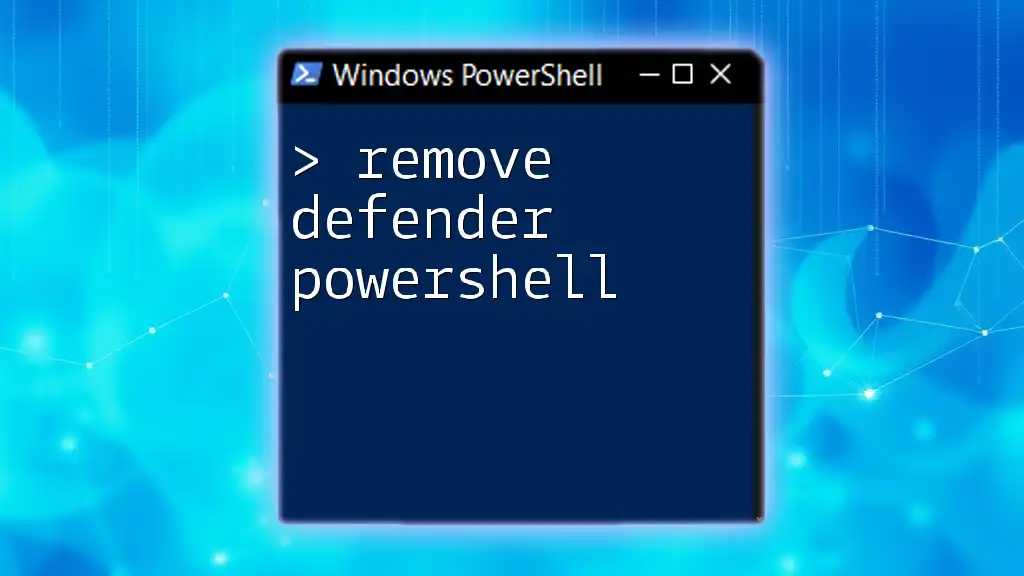
Best Practices for Exporting DHCP Data
Regular Backups
Creating regular backups of DHCP configurations is crucial. It ensures that you always have access to a recent set of parameters, which can save invaluable time and resources in the event of a server failure.
Documentation of Changes
Keeping detailed logs of changes is advisable. Documenting each time you export or modify settings assists in tracking configurations over time and provides clarity during audits.
Testing Imports on Non-Production Servers
Before importing configurations into a production environment, it is prudent to test the import on a non-production server. This practice allows you to verify that the exported settings work as expected without risking service interruption.

Conclusion
Using PowerShell to manage DHCP servers is an efficient way to handle configurations, particularly when it comes to exporting and importing settings. By mastering the export dhcp server powershell commands outlined above, you can maintain better control over your network management tasks. Regular practice and application of these commands will enhance your administrative efficiency and streamline network operations.

Additional Resources
For those eager to deepen their knowledge, refer to the official Microsoft documentation on DHCP and PowerShell. Additionally, consider exploring various online tutorials and courses dedicated to PowerShell operations to further enhance your skills and understanding.

